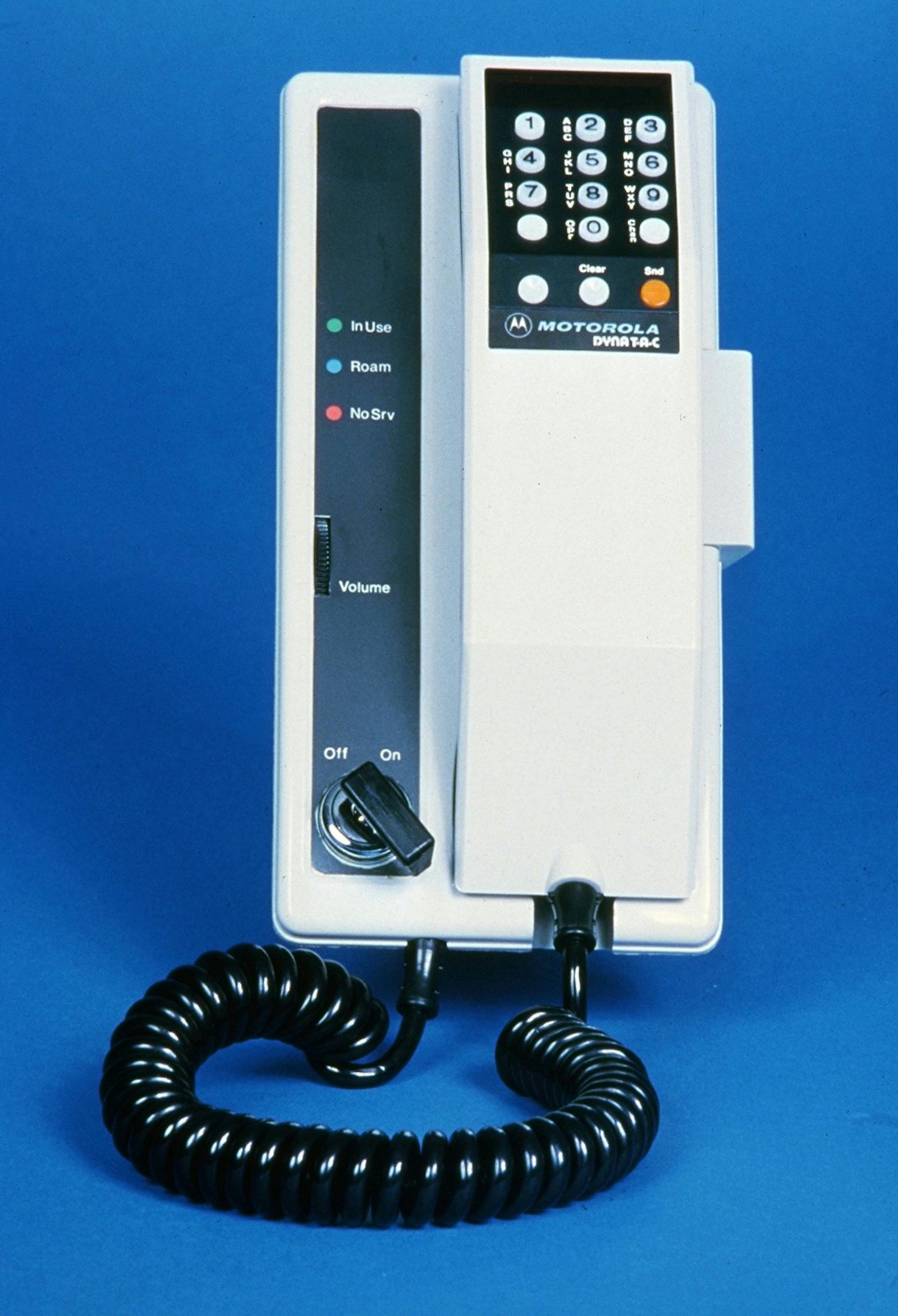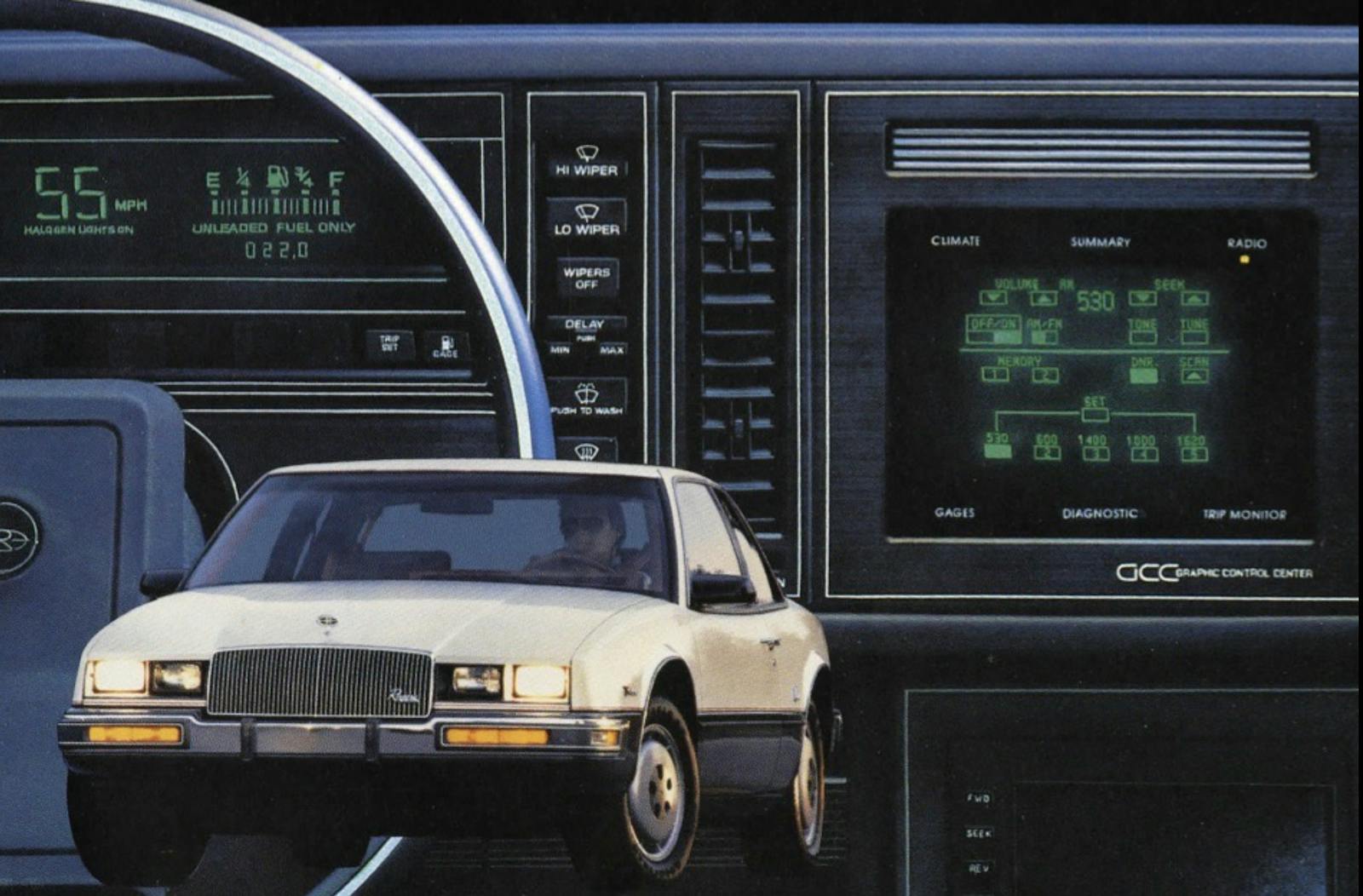Media | Articles
Calling All Cars: A Brief History of Phones in Automobiles
It’s inevitable—the march of technology turns formerly novel activities into afterthoughts. Nowadays, we don’t think twice about calling someone via the handy touchscreens of our modern cars—few people stop to consider the interwoven underlying technologies, and that they have actually been with us for decades.
It started with the mobile car phone, a good bit further back in history than you might think.
The first wireless phone call was made from the front seat of a Chrysler in June 1946, using equipment manufactured by Galvin Manufacturing Corporation, now known as Motorola, and technology developed by Illinois Bell Telephone. Their first car phone used vacuum tubes, like radios of the day, and weighed 80 pounds, filling the car’s trunk. Its success ensured that Motorola would continue to produce Bell Telephone handsets.
Galvin was a pioneer in car electronics, introducing the first successful car radio in 1930, the Motorola Police Cruiser radio receiver in 1936, and two-way car radios in 1940. That same year, the company introduced the Handie-Talkie, a handheld, wireless two-way radio used by the U.S. military during World War II that would provide the starting point for the first cellular phone three decades later.

But the 1946 development of the Auto Phone, as it was called, led Bell to introduce in-car phone service in Chicago in December of 1946. Only a few users could make calls at once, so patience was required. And the farther down the highway you travelled, the more prone your call was to interference, as the signal was good for only 25 miles.
It cost $25 to have the phone installed, and customers were charged a $15 monthly service charge, plus as much 40 cents per three-minute call. That may not sound like much, but adjusted for inflation, that’s $365 for installation, $219 a month plus $5.85 per three-minute call.
It would take a confluence of breakthrough technology to get to the systems we use today.

Among them was the development of the wireless cellular phone, invented by Motorola engineer Martin Cooper. Dubbed the Motorola DynaTAC in 1973, it would take the company until 1984 before the Motorola DynaTAC 8000X wireless cell phone reached consumers. It would be followed by the DynaTAC 6000X, the company’s first cellular car phone, later that year.
Do You Know Where You’re Going?

Meanwhile, another technology was developing that would dovetail into the car phone: The global positioning system, or GPS, which allows for digital navigation. In the early 1960s, the U.S. Navy, the Naval Research Laboratory, and the U.S. Air Force all had independent programs aimed at developing GPS in an effort to track Soviet satellites. The programs were combined into NAVSEG, or the Navigation Satellite Executive Group, in 1968, and approved for development in 1973, with the first NAVSEG GPS satellites launched from Cape Canaveral in 1989. By 1993, GPS was opened to civilians, with competing Russian and European systems already in use.



There were early attempts at digital mapping in cars, the first being the Honda Electro Gyrocator, a Japanese dealer-installed option on the 1981 Honda Accord. It used sensors and gyroscopes that compared the actual road to a map, thus guiding the car. Since maps aren’t always accurate, neither was the system.
The 1990 Eunos Cosmo, Mazda’s Japan-market upscale marque, offered the world’s first modern in-car GPS navigation system. Not to be outdone, Toyota introduced its first GPS system on the Japanese-market 1991 Toyota Soarer, known as the Lexus SC in the American market. This system displayed the car’s location on a six-inch color LCD screen.

Soon after, General Motors’ Oldsmobile and Delco divisions introduced a built-in GPS navigation system using a six-inch, full-color Sony CRT. Named TravTek, it used a GPS signal and CD-ROM-based maps to supply directions. First installed on Avis Rent-A-Car vehicles in Florida and California in 1994, for 1995, it was renamed GuideStar, becoming a $1,995 factory option on the Oldsmobile 88 sedan. Offered in California or Las Vegas, the screen plugged into the middle of the instrument panel and could swivel left or right. A GPS signal and CD-ROM maps supplied the driving directions.
Other automakers followed, but few used touchscreens. But touchscreens had already been in use for a two decades—just not in cars.
Touch Me Babe

The capacitive touchscreen was invented in Malvern, England by E.A. Johnson at the Royal Radar Establishment. First used for air traffic control in the 1970s, touchscreens finally reached consumers with the release of the Hewlett-Packard HP-150 personal computer, with a nine-inch Sony cathode ray tube touchscreen in 1983. Its use in a car was already being developed by unlikely brand: Buick.
Beginning in 1980, Buick’s managers set out to produce a car with the industry’s most advanced electronics by the mid-1980s, believing this was the sort of technology that GM needed to remain the world’s leading automaker.
Dubbed the Graphic Control Center, or GCC, it debuted on the 1986 Buick Riviera. It was used for the automatic climate control, AM/FM radio and graphic equalizer, trip calculations, gauges and vehicle diagnostic information. With its black screen and green readout, the GCC may seem like a relic now, but it sure didn’t at the time.

Buick executives loved the new feature, most notably Lloyd Reuss, who served as GM President from 1990 through 1992, and is the father of current GM President Mark Reuss. Buick executive Cary Wilson was also beguiled, if prophetic.
“A new generation of automobile electrical systems is at hand, and Buick has set the stage,” Wilson said in 1986. Others were less enthusiastic.
Marketplace
Buy and sell classics with confidence
“Buick saved its hot moves for the dashboard,” wrote Car and Driver. “There, mounted dead center, like a window on the future, is the magical, touch-sensitive CRT screen, a.k.a. Graphic Control Center—the interface of an all-seeing, all-knowing computer that is meant to transform a trip to the 7-Eleven into a space odyssey.”
Sarcasm and smugness aside, this touchscreen proved to be the keystone, the point at which all of the technologies coalesced. It would provide the foundation for automotive infotainment software, including Ford Sync, BMW iDrive, Mercedes-Benz COMAND and GM’s OnStar, among others, as well as the screens that now populate the center of every automotive dashboard.
And it started with a phone call from the front seat of a Chrysler in 1946.



















Now we have all this tech and much more in a small package we can carry in our pocket.
Never underestimate technology.
I realize that this was a “brief” history, but you totally skipped over a couple of decades — the 50’s and 60’s.
Next was a jump into GPS, comprising the majority of the article.
GPS is great, but you can’t call your Mom with it.
In the 60’s and early 70’s a Motorola car phone was the real status symbol. They used a single transmitter over 13 different frequencies for a given metro area. If 13 calls were being made, you had to wait until someone hung up. Furnished by Ma Bell, they were approximately $100/month and $1.00 a minute to use. Typically, the transmitter was installed in the trunk, the head set was mounted on the transmission tunnel and antenna on the trunk lid or roof. I Installed a bunch of these in Miami in the early 70’s.
My first car phone was a Radio Shack late 80’s. I still have it, in a drawer.
Had a tube car phone in the 70’s (Realtor). You had to go though an operator to make a call. It had pretty good range and the best call sign in Victoria at the time “7M74”. I used in an airplane also, with amazing range at altitude, but the power drain caused electrical problems!
Somehow this article about car phones morphed into an article about GPS and touch screens, but whatever….
Just wanted to mention that the very same Lexus SC’s mentioned in regards to GPS also were available with a telephone built into the center console. A brick for sure but still pretty cool.
I worked at a medical group where the rich doctor owner showed me his nav system installed in his Mercedes S-class. It was made by Etak. It had a screen that used vector graphics (like Asteroids) and a unit installed under his seat that used a cassette tape for data storage of the maps. One could get different tapes for different areas (e.g., LA, Orange County, etc.). We were in Southern California, so I don’t know what other areas Etak had mapped. Pretty impressive technology for the time, considering I was using a Thomas guide! 😆
Think you’re a little off on your dates for cell phones. I went to work for Motorola in 1979 and they had just shipped cellular systems to New York, Chicago & Los Angles. Cell phones for cars were being sold to the telephone companies for around $4,500 for them to lease to customers. So cellular phones were available before 1984, just not handhelds.
The earliest car phones are quite funny to think about considering the space thy needed. Now no space is required and yet we have to get rid of the CD player for some reason. (side rant)
I own a 1992 Toronado Trofeo with the CRT Sony Touch Screen and the Factory Cell Phone option in the center counsel so I read with interest the portion of the article regarding TravTek. I seemed to recall the Navigation system was a made available to a rental car company in 1992 Toronados like mine, sooner then the 1994 date stated in the article so I did some research and found this link:
https://www.theautopian.com/gm-had-gps-navigation-working-back-in-1992-but-abandoned-it-a-year-later/
It confirms GM provided Avis with 75 Toronados and 25 to “test drivers” in the Orlando area in 1992 with Trav Tek. They were different then my car in that they had a very large and bulbous GPS antenna mounted to the right rear of the truck lid.
When I was 4 years old (1964) my best friends’ uncle came to visit his sister in Connecticut, driving his Ferrari from Texas. I don’t remember or ever knew what model it was but I certainly remember that he had a phone in the car. It didn’t work very well but it was a phone which was way cool. This fellow (Bruce Barrons) also raced Corvettes and was Johnny Winters manager. Wow, what a combo.
I HAVE A 1993 MERCEDES 500E AND IT HAS A CAR PHONE IN THE FRONT ARM REST. USED FOR A FEW YEARS BUT CELL PHONES BECAME MUCH CHEAPER AND BETTER.
In 1962 my dad worked for Bell Telephone in Greensburg, Pa. He occasionally brought a company car home. It was a Rambler and had a car phone in it. All the neighbor kids came to look in the car with a phone. When Bell was introducing the touch-tone push-button phones to replace the rotary dial units, the Greensburg office was the first in the nation to start the conversion. My dad was in charge of that project.
In the late 1970s as a 25 year old junior marketing executive with a big company I would fly into Chicago and the principal of our assigned ad agency would pick me up in his Mercedes and it had a phone in the center console. He would awkwardly place calls and receive an occasional call. Mystifying at the time. Part of the allure of the “advertising business” at the time. They charged big city fees and spent plenty on entertainment, photography, models, office furniture and administrative assistants that were as pretty as TV actresses. It seemed the phone call was always lost as we drove into Chicago suburbs. Cellular technology I guess.